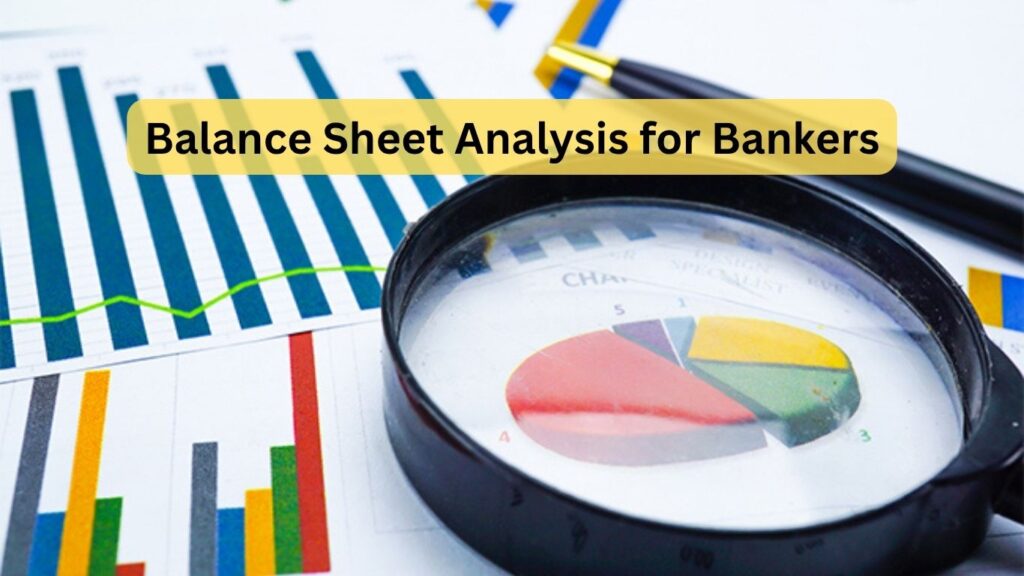In the world of banking, credit risk assessment stands as one of the most important tasks. The ability to evaluate the financial health of potential borrowers ensures that banks can protect their assets while also extending loans to those who have the capacity to repay. A critical element of this evaluation process is balance sheet analysis. By meticulously analyzing a company’s balance sheet, bankers can gain deep insights into the financial standing of a business and make well-informed lending decisions.
Balance sheet analysis for bankers is an essential practice, whether they are assessing new credit applications, monitoring existing credit lines, or conducting annual reviews of borrower performance. It is not just about understanding a company’s profits and losses—it’s about interpreting the full financial picture, including assets, liabilities, and equity, to determine risk exposure and financial stability.
The Role of the Balance Sheet in Credit Risk Assessment
A balance sheet, by definition, is a snapshot of a company’s financial position at a specific point in time. It consists of three primary components:
- Assets: What the company owns, including both current (short-term) and non-current (long-term) assets.
- Liabilities: What the company owes, including current liabilities (due within a year) and long-term liabilities (due in over a year).
- Equity: The ownership interest in the company, which represents the difference between assets and liabilities.
For bankers, understanding the balance sheet is critical because it offers a detailed overview of a company’s financial health. This knowledge allows them to assess whether a borrower has the financial stability and liquidity necessary to meet their obligations.
Liquidity Assessment: Can the Borrower Meet Short-Term Obligations?
Liquidity is one of the most important factors in credit risk assessment. It refers to the ability of a company to meet its short-term liabilities using its current assets. A liquidity problem can lead to cash flow issues, making it difficult for the borrower to pay interest or principal on loans.
Bankers often use liquidity ratios, such as the current ratio and quick ratio, to evaluate a company’s short-term financial health:
● Current Ratio: This ratio compares a company’s current assets to its current liabilities. A current ratio greater than 1 indicates that the company has enough short-term assets to cover its short-term liabilities.
● Quick Ratio: This is a more conservative measure, excluding inventory from current assets, since inventory may not be easily converted into cash. The quick ratio provides a clearer view of a company’s ability to meet short-term obligations using only the most liquid assets.
When analyzing a balance sheet, a banker will look for signs of healthy liquidity—indicating that the borrower can comfortably meet their current obligations—or warning signs such as a low current ratio, which may indicate a potential cash flow problem.
Assessing Solvency: Can the Borrower Sustain Long-Term Debt?
In addition to liquidity, solvency is a critical factor for bankers to consider when analyzing a borrower’s balance sheet. Solvency refers to a company’s ability to meet long-term financial obligations and sustain operations over time. A company that is insolvent may struggle to survive and repay debt.
The solvency of a business is typically evaluated using debt-to-equity ratios, which provide insight into how much of the company’s assets are financed by debt versus equity. A high debt-to-equity ratio may indicate that the company is overly reliant on borrowed funds, which could be risky if the company faces a downturn or market volatility.
For example, a debt-to-equity ratio of 2:1 means that for every dollar of equity, the company owes two dollars in debt. High ratios can signal higher risk, especially if the company operates in an industry where cash flows are unpredictable.
Bankers use this data to assess whether the company is over-leveraged or financially stable. The lower the ratio, the less risk a bank assumes when extending credit.
Profitability and Operational Efficiency: How Well is the Company Performing?
Profitability is another key indicator of a company’s financial health. By analyzing a company’s income statement alongside its balance sheet, bankers can assess how efficiently the company generates profit relative to its assets, liabilities, and equity. Profitability is particularly relevant when assessing the company’s capacity to repay a loan or interest on outstanding debts.
Conclusion: The Power of Balance Sheet Analysis in Credit Risk Assessment
Balance sheet analysis is not just a tool—it is a crucial aspect of the entire credit risk assessment process for bankers. It enables them to evaluate a company’s liquidity, solvency, profitability, and asset quality, and make more informed decisions about lending and financial risk.
By leveraging balance sheet analysis, bankers can ensure they are making sound lending decisions that protect the bank’s interests while supporting sustainable growth for borrowers. As the financial landscape continues to evolve, the importance of thorough and accurate balance sheet analysis in credit risk assessment will only grow, empowering bankers to navigate financial complexities and build strong, financially stable portfolios.


